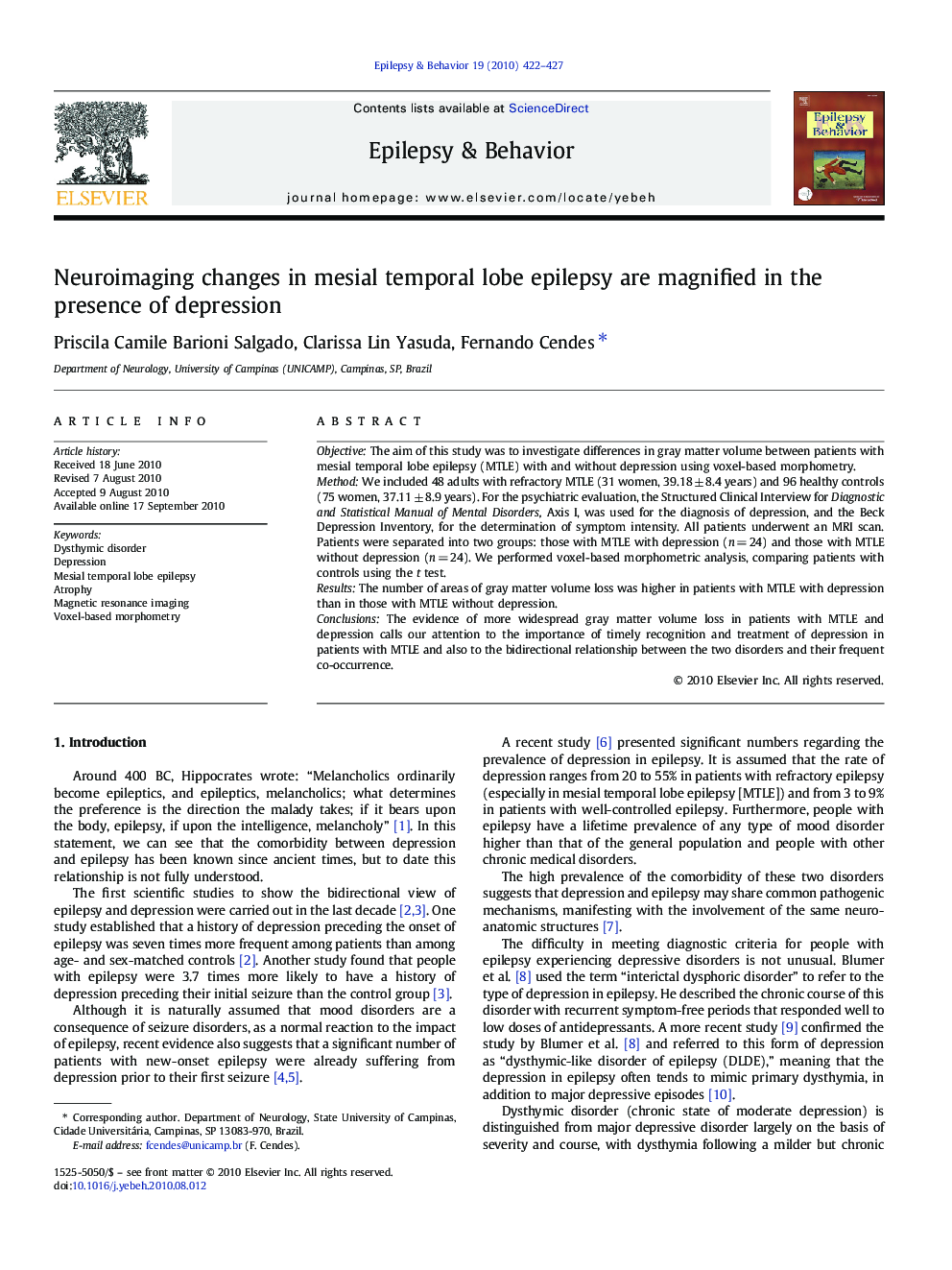| Article ID | Journal | Published Year | Pages | File Type |
|---|---|---|---|---|
| 3050099 | Epilepsy & Behavior | 2010 | 6 Pages |
ObjectiveThe aim of this study was to investigate differences in gray matter volume between patients with mesial temporal lobe epilepsy (MTLE) with and without depression using voxel-based morphometry.MethodWe included 48 adults with refractory MTLE (31 women, 39.18 ± 8.4 years) and 96 healthy controls (75 women, 37.11 ± 8.9 years). For the psychiatric evaluation, the Structured Clinical Interview for Diagnostic and Statistical Manual of Mental Disorders, Axis I, was used for the diagnosis of depression, and the Beck Depression Inventory, for the determination of symptom intensity. All patients underwent an MRI scan. Patients were separated into two groups: those with MTLE with depression (n = 24) and those with MTLE without depression (n = 24). We performed voxel-based morphometric analysis, comparing patients with controls using the t test.ResultsThe number of areas of gray matter volume loss was higher in patients with MTLE with depression than in those with MTLE without depression.ConclusionsThe evidence of more widespread gray matter volume loss in patients with MTLE and depression calls our attention to the importance of timely recognition and treatment of depression in patients with MTLE and also to the bidirectional relationship between the two disorders and their frequent co-occurrence.
Research highlights► Depression was frequent and more severe in people with left MTLE than in right MTLE. ► People with MTLE and depression had more brain atrophy than MTLE without depression. ► This atrophy was subtle and not observed by regular MRI. ► It is unclear if these changes are related to the cause of depression in MTLE. ► But it is further evidence for biological factors related to depression in MTLE.
